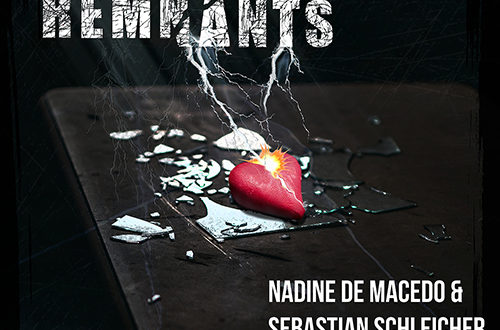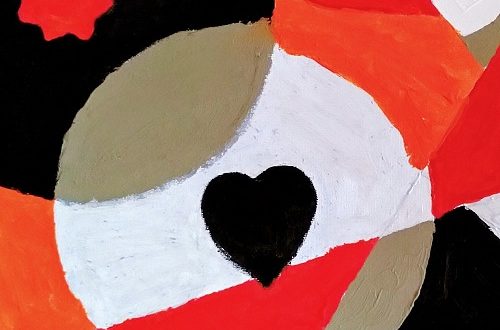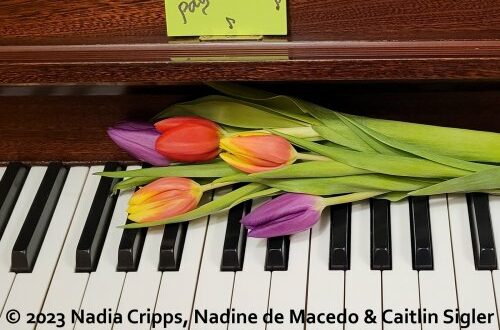
Understanding song structures
When I chit-chat with musicians, we talk a lot about melodies, lyrics and instruments, but we don’t talk about song structures. This is even more essential to keep the listener to the end or intentionally kick them out of their comfort zone. I wrote this article to explain some well-known structures and offer options for new ones.
Song parts and their functions
Listening to modern music, you may figure out that each song is constructed by repeating parts. Analyse the lyrics and chord progressions to figure out which part comes when. I grew up with electronic club music of 8 minutes length, where the length of every part has been divided by 32 or 16. In pop and rock music the structure of 8 or 16 bars is quite common, whereas blues is mostly in 12 bars or 16 bars. It’s an unwritten rule, that feels best to most listeners, musicians and DJs, but you can also try different things as long as the same parts have the same length and sound consistent.
Let me introduce you do the most common song parts and their function.
Intro (I)
There is only one intro in a song, and it’s right in the beginning. The intro consists of atmospheric sounds, a foreshadowing of the chorus, or something completely disconnected to the song. My rule of thumb: the longer the song, the longer the intro. However, the intro shouldn’t exceed one third of a song. The function of an intro is creating an atmosphere and rises the tension. A good example of my discography is the progressive metal song “Truth” starting with ticking clocks and synthesizers.
Outro or coda (O)
Opposed to the intro, but following the same rules, the outro occurs once at the very end of the song. It creates an atmosphere and releases the tension. Most of the time, intros and outros are connected, but it is not a must. If you see a song as a journey, the outro could have a completely different mood. Some people also call the outro coda – but for me, a coda is a special type of outro that is directly connected to the chorus. For example, on “Fit Right In” we repeated the last half of the chorus followed by a ritardando (slow down). Believe it or not – Even the final chord could be an outro, if you’re technically precise.
Verse (V)
The verse is one of the main elements of a song. Usually, all verses have the same metric and melody. The main function of a verse is telling a story. Neglecting the chorus, you can read a song as a poem! A usual pop song has two verses, sometimes three. In very old songs and folk ballads, the whole song can consist of verses. The lyrics and instrumentation may change, but the harmonies and metric are the same.
Chorus (C)
The chorus is the catchy sing-along part that occurs at least twice in a song. It usually has a different melody and chord progression than the verse. The chorusses usually have the same lyrics, but it is not a must. There is an example below, where we used the same metric and melody for a different lyric.
Solo (S)
Most rock and metal songs have at least one solo. That soaring, uplifting, complex lead guitar everybody waits for, close to the end of the song. It’s often played on the same chords of the chorus, but some people prefer writing a completely different chord progression. Be careful with jazz and blues music, though lots of musicians play solos, not every part is a solo. If the vocalist and soloist have a conversation, we’re probably not in a solo part.
Bridge or middle 8 (B)
To avoid too many repetitions of the verse-chorus-structure, many songwriters insert a bridge (or middle 8 – standing for 8 bars) in the middle or last third of the song. Its melody and chord progression differs from the chorus and verse and creates tension. Lyrically, the bridge is characterized as the turning point of the story. In pop music – especially ballads – bridge are often used to change the key (modulation). The bridge of “Going My Way” starts with “I wanna scream out” creates a big tension by changing the rhythm.
Post-Chorus (PostC) / Interlude
It’s a kind of simple, catchy interlude that is intentionally after the chorus. If you listen to electronic dance music, you’ll know this sing-along synthesizer that plays nearly the same melody as the chorus. But it’s also used in other genres. Most of the time, the post-chorus is instrumental or filled with a very striking rhythm and simple lyrics. One of the most striking post-chorus I wrote is the reoccurring guitar solo on “Where does it end?”. This part is also called interlude, especially when it’s followed by the next verse.
Pre-Chorus (PreC) / Mini Bridge
Most pop songwriters connect verse and chorus with a pre-chorus. This section, which is sometimes also called mini bridge, usually consists of 2-8 bars and is a good place to do a modulation on key or tempo before the chorus kicks right in. “Don’t tell me if it hurts” has a very strong and pop-rock typical pre-chorus. It’s the part around “Does your heart skip a beat…”. In contrast to a verse, the pre-chorus leaves a virtual question mark at the end, that is resolved by the chorus.
Drop (D) / Break Down
A breakdown is a special kind of post-chorus or bridge, where a song changes completely its mood. It can be an intentional anti-climax of some bars… or a sudden drop. My former trance productions all have break downs, but I think the one of “The Awakening” is quite striking, it’s where the orchestra kicks in. It was pretty unusual in handmade music, but nowadays most metalcore songs also have break downs or even drops. The difference between these two is only the length and intensity. Drops are shorter and heavier.

Usual schemes
Verse Chorus in Pop Music
I call myself a songwriter for pop music, because I mostly stick to the pop scheme. The combination of verse, chorus and solo is known to most listeners, easy to handle and results in a handy song of 3-4 minutes of lengths. You may notice that not every pop song has an intro and an outro, but all have the verse followed by a chorus and sometimes a pre-chorus in between. Some variations:
- I-V-C-V-C-O
- V-C-V-C-V-C-C
- V-C-V-C-B-C-C
- V-PC-C-V-PC-C-S-PC-C
- I-V-PC-C-PC-V-PC-C-PC-S-PC-C
The classical rondo
The word rondo sounds like round, and this is what it’s all about. It’s a song structure from the middle ages, classical and baroque music where one part occurs more often. Some usual structures look like this:
- A-B-A-C-A-B-A
- A-B-A-C-A-D-A
- A-B-A-C-A-D-A-E-A
If you call A a chorus and B, C, D verses, you will get:
- C-V1-C-V2-C-V1-C
- C-V1-C-V2-C-V2-C
- C-V1-C-C2-C-V3-C-V4
So yes, there are some pop and rock songs in rondo form!
Quitting the schemes
The pop scheme is user-friendly, but boring. When you don’t care much about writing a chart topping song, you can experiment or arrange the parts in a way that it feels consistent with the message. Here are some example of my exotic arrangements.
Sleepless – Open end with a solo
Let’s start with an easy example, how to screw up listener’s expectations. “Sleepless” roughly follows a typical pop scheme, BUT (a) there’s a drop inside the verse, (b) the chorus sounds like a pre-chorus and (c) It ends with a solo. Everybody waits for another chorus, that doesn’t come. I decided to go this way, because the lyrics start with self-pity and then, he just lets go. This guy found some sleep, cause this song’s ending is positive. The structure is:
I – V – C – PostC – V – C – B – S – O
Hero – Multiple key changes and a two-part chorus
Though following a rough verse-chorus pop scheme, we completely mess up people’s expectations on melodies and keys. The verse is in F-major, so the obvious pop chorus should start with a C-chord. Instead, we start with a D major chord, applying modal shifts and borrow chord weirdness. If you listen closely you will also notice that the chorus consists of two parts. Another interesting aspect is the very short intro (one chord!) and outro (part of the chorus). It was important to follow a quite usual scheme, otherwise the song would have been too complex.
I – V – C1 – C2 – V – C1 – C2 – B – S – C1 – C2 – O
September – Two different choruses
“September” is telling a story from beginning to end. The whole song is based on 4-5 chords, but we have multiple verses and chorus with the same chord structure and metric. The lyrics tell a story, so there is no reoccuring part unless you consider the metric. Another interesting aspect is a variation on the chorus (C2) that occurs twice. The song structure is:
I – V1 – C1 – PostC1 – V2 – PostC2 – C1 – C2 – S – B – C1 – C2 – O
Truth – Chapters as a concept
One of the weirdest song structures I created has been for our multi collab “Truth”. It has neither verse nor chorus, but reoccurring musical themes. Listen carefully to the piano theme in the intro. You will find the same theme in a different key, as flute, in another different key and the intro in the very end. This song tells a story with no way back, so why should there be a chorus?! It’s hard for me to write down the song structure, maybe something like:
I1 – I2 – C1 – Interlude – V1 – Interlude2 – D1 – Interlude3 – V2 – V3 – S1 – S2 – D2 – S3 – V4 – D3 – C1 – S4 – Interlude2 – C2 – O
Play around with the structure
If you’re new to songwriting, using one of the usual schemes is a good way to go. But if you got stuck in a rut, play around with the structure. There are no rules in art, only best practises. The worst thing that could happen is that your audience is confused and quits the song after 30 seconds. Others may love a monumental work of progressive rock. If you recorded and documented everything neatly, you can still change the structure of a song after recording.




